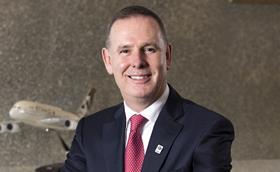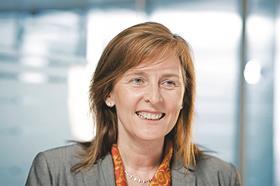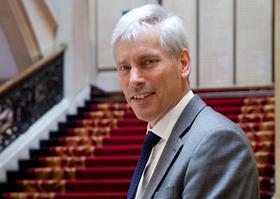The latest man tipped to replace Ray O’Rourke is leaving after less than a year, throwing the 2024 float into doubt. Dave Rogers considers why the septuagenarian founder is still at the helm of his firm
Balfour Beatty might be bigger, Sir Robert McAlpine more aristocratic and Morgan Sindall way more profitable than any of them. But no construction firm continues to fascinate the industry like Laing O’Rourke does.
Much of that is down to the septuagenarian who runs the firm and, especially as he gets older, the ongoing question of who will eventually succeed him.
It is difficult to overstate how much of a shock it was when Ray O’Rourke’s concrete business bought Laing Construction more than two decades ago. That firm had spent much of the previous decades building some of the best-known jobs in the UK before it over-reached itself on the scheme to build the Millennium Stadium in Cardiff and a then little-known job called the National Physical Laboratory.
While Laing bosses were privately expecting bids of £100m to come in from European rivals when it was put up for sale 22 years ago next month, they never did. It was, instead, a subcontractor based in Dartford, Essex, who stitched together a deal to buy the firm for a nominal £1 and at the same time offload more than a dozen problem contracts on to the rump of Laing that was not being sold.

Steve Pycroft, another figure associated with a single, comparable act that transformed the company he ran – namely the decision he made which saw Mace build the Shard – called it “the deal of the century”. There has still not been one like it since.
At the time, Laing, which can trace its roots back to the 1840s, was headed by Sir Martin Laing, the fourth generation of the family to run the business. Privately educated and a graduate from Cambridge, he was knighted in late 1997 in Tony Blair’s first honours list. Also receiving knighthoods that year were former Beatle Paul McCartney and playwright Alan Ayckbourn.
By way of contrast, Ray O’Rourke set up his business in 1978, focusing on the rough and tumble world of concrete pouring with his younger brother Des, who, legend has it, would turn up at sites in the small hours of the morning to make sure workers were clocking in on time.
The two firms had differing histories and styles, and O’Rourke knew it
Laing had built up a reputation as a patriarchal firm, chartering trains to take staff on away days to the seaside in the 1950s. It was a production line of industry talent and one that had made its name helping to rebuild the country after the ravages of the Second World War.
The two firms had differing histories and styles and O’Rourke knew it. In one of his first moves, he brought in a former Laing director Andy White from Alfred McAlpine as chief operating officer to calm staff panicked by the news they were being taken over by one of their subcontractors.
White, a former Manchester City trainee, now occupies a small footnote in the history of the newly formed firm, having lasted for just five months. Fittingly, some might say. He was the first of several to come and go.
Now, two decades on, the latest name preparing to depart Dartford is getting ready to pack his bags too. Seamus French, a 60-year-old Irishman, only joined Laing O’Rourke at the start of the year and was widely seen as the man who would steer the firm towards a float which, O’Rourke had told the Financial Times last September, could happen by 2024.
French spent 14 years at Anglo American, in charge of part of the business which accounts for over one-third of the mining giant’s $42bn income. To underline Anglo American’s size, the firm last year paid out more in wages than O’Rourke turned over.
His departure is said to be amicable and O’Rourke says that French, a non-executive at the firm since May 2020, remains “a genuine friend”. But the news has raised eyebrows and shone a spotlight, again, on the problem of taking over from a man who seems to have a problem with letting go.
“Biggest surprise of the year!” quipped one industry veteran when the announcement broke yesterday morning.

Others, though, were caught on the hop. “I’m really surprised at this, particularly as Seamus seemed to be getting around all their projects and understanding the business,” one says. “This is definitely a shock and perhaps points to something fundamentally wrong in the background. Does this mean the IPO plan [float] is out the window?”
Asked what the succession plan looks like now, another adds: “I have to say, I have no idea. It all looks a bit messy.
”I think Ray took a few weeks off over the summer and thought, ‘I don’t want to be watching telly all day’. He’s very hands on and has some very strong relationships with clients. That’s hard for him to let go of.”
As things stand, the firm is led by an 80-year-old chairman in Sir John Parker – well regarded by many, who has brought a bit more plc rigour to the business – and a chief executive who turns 76 next January.
>> Also read: Ray O’Rourke: Am I leaving soon? I hope not
>> Also read: Ray O’Rourke: I’ve never seen anything like this before
O’Rourke has promised to remain in charge for “stability and continuity” and will be in post for another two financial years, by which time he will be 78.
It is no coincidence that another two financial years takes the firm into 2024 – and the year of the supposed float. But some now don’t think it will happen at all.
“I think a float was a long way off in any event, but [French leaving] does not look good,” says one executive. “I’m not sure the market is looking for another listed contractor either.”
Another adds: “If they do offload it, shareholders will not accept an internal appointment. There is not enough experience or credibility there.”
While French’s departure made the headlines, the latest accounts, also published yesterday, revealed more bad news on overseas contracts.
But will investors really pile into a business that, in its last set of accounts, posted a pre-tax profit of £2.7m on an income of £3bn? “They’re kidding themselves,” one boss says. “I hear from the market that their work-winning isn’t going so well because they are so risk averse.”
While French’s departure made the headlines, the latest accounts, also published yesterday, revealed more bad news on overseas contracts.
In its 2018 accounts, the firm said that it had “successfully derisked” a disastrous contract to build a new hospital in Canada. At the time, the losses on the project in Montreal stood at £206m and readers were told the firm “was not expecting any further losses”.
But they have, in fact, continued and now stand at £219.3m – a rise of 6.5% on the 2018 number.
This time around it is another overseas job that has blotted its figures – a scheme in Australia not named but believed to be one in Darwin which O’Rourke was removed from in 2017 after a bust-up with partner, Japanese firm Kawasaki Heavy Industries. Since then, the firm has spent £17m on legal fees and, in the 2022 accounts, announced it had made a £69.6m “adjustment to the value of a contract asset”.
French is currently on holiday and is due to say his goodbyes before Christmas. He says he is “available to assist the business in any way I can” – presumably in his non-executive role – and says he is going in part because “my experience tells me it is better to allow the established team to flex and respond to the market at this time”.
Last year, O’Rourke said a float by 2024 would allow the business to get into “good shape”. Under that timetable, it has two years left in which to do so. At the time, one industry veteran said: “If they want to float, they need to have a succession sorted out. They can’t float for a bit because they haven’t built up a good track record on profit. Investors either won’t invest or pay much for it if they do.”
It would seem to be an even taller order now, one year later and with another executive – presumably brought in on a big wage – gone. “I thought [French] may have lasted a bit longer, but Ray has a track record of doing this,” one rival says. “I can’t see anybody else wanting to take on that role now.”
The men (and woman) who could have been Ray
Andy White
Appointed in March 2002, White started out at Laing in the 1970s. He was head of special projects at Alfred McAlpine before being appointed chief operating officer at Laing O’Rourke. He left in September of that year because, O’Rourke explained, a restructuring had been completed.
“Andy handled the restructuring and it went so well that it was a job that wasn’t there after five months,” he said a few weeks later.

Tony Douglas
Now a non-executive at Keltbray and until this week running Etihad Airways, the Everton fan joined as chief operating officer in July 2007 from Heathrow airport where he was chief executive. Seen as the natural heir to O’Rourke, he went in November 2009 after reportedly becoming disillusioned over whether he was ever going to get the top job.
At the time of his leaving, the company said: “Having guided the group through a number of serious recessions in the past, it was felt appropriate for Ray to continue to focus on retaining cash and personally engaging with stakeholders in his ongoing leadership role.”
Douglas is tipped to take the top role at new Saudi carrier RIA, which is being backed by a $30bn investment from the country’s public investment fund which helped to bankroll last year’s takeover of Newcastle United.

Anna Stewart
A Laing lifer who joined the business in 1982 as a trainee and stayed with the firm following its sale to O’Rourke in 2001. Stewart was actually made chief executive in April 2013 but had to step down a little over 18 months later because of ill-health.
She passed away in 2017 and, paying tribute, O’Rourke hailed the 53-year-old as “one of the most impressive and intelligent people I have had the pleasure of working with”.

Paul Sheffield
Hired in summer 2014, Sheffield certainly had the credentials to take over the reins at Laing O’Rourke. He spent three decades at Kier, the last four as chief executive.
He was made boss of O’Rourke’s Europe hub but hinted at the time that persuading him to take the top job if asked would be hard. “I have made no secret about the fact that what I enjoyed most about the last 20 years is building things, not looking at spreadsheets.”
A former president of the ICE, he left the firm in February 2017 and now sits on the supervisory board of Dutch firm Royal Bam.
Seamus French
A non-executive at the firm since May 2020, French started work in January, in charge of the firm’s Europe hub and was supposed to take over from O’Rourke last month. His abilities were spotted by Sir John Parker, Laing O’Rourke’s chairman, when he previously chaired mining giant Anglo American. He is now set to leave by Christmas.



























No comments yet